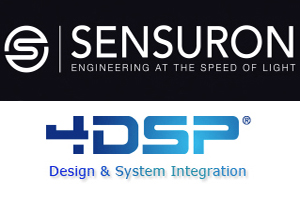26 Aug 2015
Sensors, co-developed with NASA, monitor systems in demanding environments to encourage sustainable development.

Sensuron and 4DSP: now separate firms.
Michael Heflin, CEO at Sensuron, commented, “By investing in compact fiber optic sensing solutions, businesses can consolidate several disparate technologies into a single platform to continuously test, control and monitor the health of systems. Sensuron’s FOS platform enables innovations that change industries.”
Allen Parker, an engineer at NASA’s Armstrong Flight Research Center, said, “We have been collaborating with 4DSP, now Sensuron, to develop the next generation of fiber optic sensing systems for the past 10 years. We have been able to build an exponentially smaller system than was previously used in these markets, with exceptional accuracy. Driven by NASA’s ultra-efficient algorithms, this compact FOS system represents a major breakthrough in high-speed operational monitoring and sensing.”
Market opportunity
Across aerospace, medical and energy fields, equipment deterioration and the continuous monitoring of materials can be expensive to maintain and costly to an organization’s operations. Defective equipment can pose risks for civilians and consumers. For example, without careful monitoring, strain during flight can lead to airplane structural problems. Additionally, in launch vehicles, liquid levels in fuel tanks may be higher than needed reducing payload capacity. In the energy field, unreported collisions with rigs can cause long-term structural risks.
Sensuron states that by using existing techniques for monitoring equipment, “engineers are struggling to keep up with industry developments”, adding, “however solutions that not only solve problems, but also help engineers to approach challenges with new thinking, will increase competitive advantages.”Heflin added, “Sensuron’s compact FOS technology measures miniscule changes in temperature, volume, liquids and stress over a variety of surface areas. The platform can also provide 2D and 3D shape sensing. The fiber sensors reflect light readings back to a converter, which provides users with real-time measurements.”
Sensuron was recently recognized as a 2015 R&D 100 Finalist for its work with NASA Armstrong Flight Research Centre. The global consumption value of fiber optic sensing expected to increase to $2.2bn by 2018, up from $1.8bn in 2013.
About the Author
Matthew Peach is a contributing editor to optics.org.
| © 2025 SPIE Europe |
|